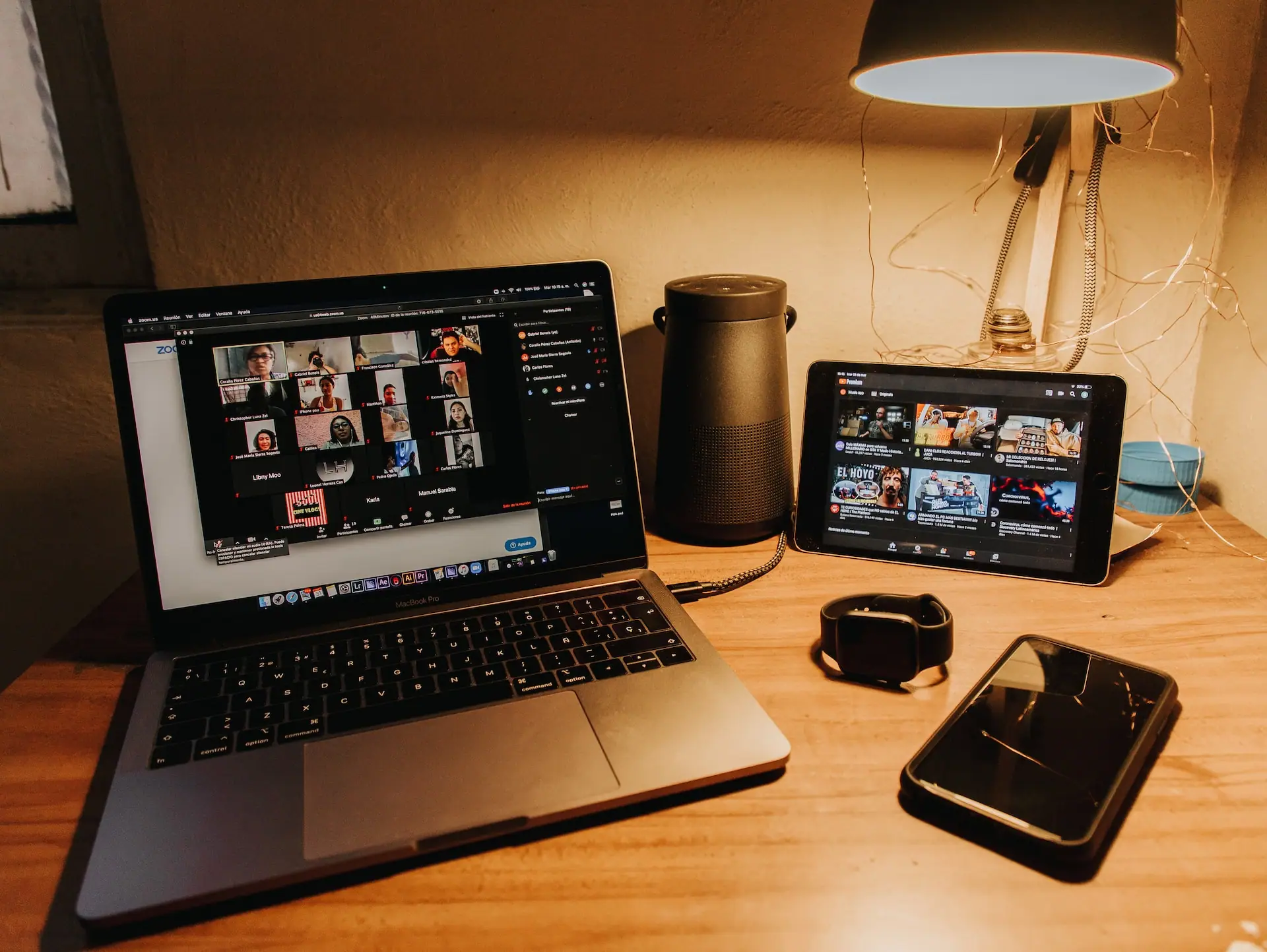
Navigating Video Conferencing Etiquette: 15 Tips for Professional Virtual Meetings
In the wake of the pandemic, video conferencing has emerged as the primary alternative to in-person meetings, revolutionizing the way businesses interact. Over the past 17 months, professionals worldwide have adapted to platforms such as Zoom and Microsoft Teams to conduct their meetings efficiently
However, like traditional meetings, virtual gatherings require proper attention and adherence to etiquette to ensure a smooth and professional experience. Recognizing the significance of video conferencing etiquette, professionals have honed their skills to navigate this new era of virtual interactions. Here are the key guidelines to excel in virtual meetings:
-
Mastering Device Etiquette: Mute and Eliminate Distractions
One of the fundamental rules of video conferencing etiquette is muting mobile phones and other devices. Just as in pre-COVID days, an intrusive ringtone or notification can disrupt the flow of the meeting. By silencing your devices, you create a distraction-free environment that fosters focused communication.
-
Dressing for Success: Enhancing Professional Appearance
While working from home may have led to a more relaxed dress code, presenting a professional image is vital in virtual meetings. Consider the significance of the meeting and your company’s culture before choosing your attire. Dressing professionally not only boosts confidence but also earns the respect of others.
-
Curating Your Workspace: Creating a Polished Background
Mindful of the visual impact, carefully select the backdrop visible during video conferences. A cluttered or unprofessional background can inadvertently reveal more about your personal life than you intend. Present a tidy and organized workspace, with bookshelves and artwork serving as suitable backdrops.
-
Lighting and Perspective: Presenting Your Best On-Camera
Be mindful of lighting and camera angles during video conferences. Position yourself optimally to avoid unflattering distortions caused by your computer camera. Additionally, avoid sitting in front of bright lights, which can cast shadows. Instead, position yourself to face the light source for a more flattering appearance.
-
Punctuality Matters: Arriving Early for Virtual Meetings
Demonstrate professionalism and respect for others’ time by arriving five minutes early for virtual meetings. Punctuality is as crucial in virtual settings as it is in face-to-face encounters. Avoid diverting the host’s attention with a late entry request, which may reflect poorly on your commitment.
-
Video On: The Impact of Face-to-Face Engagement
While seeing oneself on camera can be uncomfortable, turning on your video enhances engagement. Video conferencing provides a face-to-face connection, making interactions more memorable and fostering a sense of inclusivity among participants.
-
Screen Sharing Best Practices: Streamlining Document Sharing
Prepare in advance when sharing documents or videos during a video conference. Organize files on your desktop and declutter to ensure easy access to the required content. Remind the host to activate the screen-sharing function and conclude by stopping screen sharing when no longer needed.
-
Right-Sizing Meetings: Selecting Appropriate Attendees
Exercise discretion when extending meeting invitations to prevent overcrowded virtual sessions. Including only essential participants ensures a focused and productive discussion while respecting everyone’s time.
-
Mind Your Mute: Avoiding Common Video Conferencing Mistakes
Ensure smooth communication by mastering the mute feature. Forgetting to unmute before speaking is a common misstep that can be easily avoided with mindful attention to audio settings.
-
Efficient Meeting Management: Keeping Discussions Focused
Just like in-person meetings, setting a clear agenda with allocated time limits ensures focused discussions. Video conferencing offers the advantage of reduced meeting times due to virtual capabilities and streamlined communication.
-
Chat Appropriately: Utilizing the Chat Feature Respectfully
Be mindful of using the chat feature appropriately during video conferences. Seek permission from the host to utilize it and avoid side conversations that may disrupt the meeting’s flow.
-
Raise Your Hand: Politely Contributing in Virtual Meetings
Avoid interrupting others by using the “raise hand” feature to signal your intention to speak. This effective meeting management tool is especially valuable in larger groups, although it should be activated and monitored by the host.
-
Privacy and Consent: Recording and Photography Guidelines
Respect privacy and consent by seeking permission from all attendees before recording or taking screenshots of the meeting. Such courtesy fosters a sense of trust and respect among participants.
-
Minimizing Distractions: Creating a Focused Environment
Beyond deactivating audio and video features, manage potential distractions on your end to give undivided attention to the meeting. Designate a quiet space and request consideration from family members or housemates.
-
Snacking Etiquette: Knowing When and What to Consume
Refrain from snacking during video conferences to maintain a professional demeanor. Save snacking for breaks or before/after the meeting to avoid distracting other participants.
By embracing these video conferencing etiquette guidelines, professionals can ensure that virtual meetings remain efficient, productive, and respectful. With these best practices in place, individuals can confidently navigate the world of virtual interactions while projecting professionalism and courtesy to colleagues, superiors, and clients.
Navigating Video Conferencing Etiquette
Read more about
- Building Collaborative Excellence: Strengthening Workplace Collaboration
- Why Do Good Employees Leave? Unraveling the Employee Turnover Puzzle




GIPHY App Key not set. Please check settings